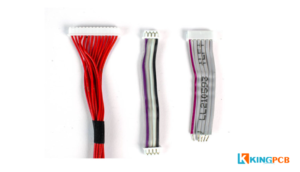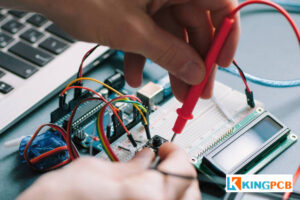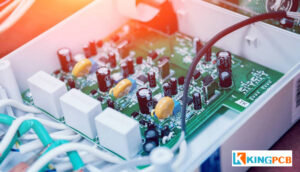PCB Wire Harness Fabrication and Assemblies- A Perfect Guide on 2023
2023-03-10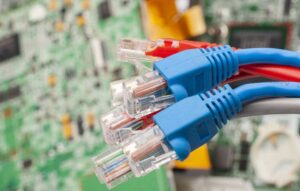
Nowadays, people's life gradually tends to develop electronically and informatization and the demand for electronic products is expanding.
The demand for wire harnesses continues to grow and the market is in high demand. When it comes to making custom electronic wire harnesses and wiring harness assemblies, the details matter greatly.
Here's everything you need to know about cable assemblies and harnesses.
What are electronics cable and harness assemblies?
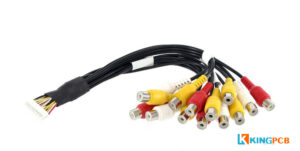
Harnesses
A wire harness consists of multiple wires and a thermoplastic or thermoset external sheath. To put it simply, a wire harness assembly is a processed bundle of wires with a protective sheath.
Because of the nature of the outer jacket, it cannot be used in a wide range of applications in harsh and demanding environments. That is why wire harnesses are used for internal work, such as personal computers or small electronics. Because of their use in small electronics or internal systems, wire harnesses are not as durable as cable assemblies.
Advantages of harness assemblies
- Optimization of space
- Customized flexibility
- Improved equipment safety
- Increased life of custom cable assemblies and wires
Cable assemblies
In our daily life, you may have noticed some electrical control panels with fuses and sockets, and a whole string of wires and cables connecting different components to that central hub. These wires and cables are all designed to carry electricity and certain signals, and this entire system together has been called a cable assembly.
The sheath of the cable assembly is made of heavy-duty materials that can withstand environmental stresses, and heavier housing is used because the assembly operates in harsher environments. The outer shell of a cable assembly can withstand following situations as below:
- Wear and tear
- Extreme temperatures
- Moisture
- Compression and expansion
Cable and harness design
The first and most important step in any electrical manufacturing process is pre-planned design. This also applies to developing cable and harness assemblies.
The wiring harness is the main body of the circuit network, and each circuit in the harness is the basis for its stability. Therefore, in the process of designing the electrical circuit, it is necessary to have high requirements for reliability.
Optimize the number of harness circuits
To perform a function in an electrical system, multiple circuits are usually required. Each circuit in a wiring harness affects the reliability of the entire system, so it can be argued that reducing the number of circuits reduces the chance of failure. But not at the expense of safety, emissions or comfort, etc., but to achieve a reasonable optimization of the system.
Reliability of terminals and connectors
Terminals and connectors are also one of the very important components of the harness, their performance directly determines the overall performance of the harness. Common failures of poor contact, fixed off and poor insulation. Choose the right connector with stable performance to improve the reliability of the wiring harness design.
Design of harness protection
The outer wrap design of the wire harness can play a role of wear resistance, cut resistance, corrosion resistance, etc. For example, for parts with intensive heat generation more area, should choose a high-temperature resistance level of the bellows wrap, such as the engine compartment wiring harness. In short, different wrapping materials should be used according to the specific environment to wrap and protect the wiring harness.
Electronics Prototyping
Prototyping is a common practice in the electronics manufacturing industry. Creating a test version of the final product is critical to resolving any issues that were not addressed during the design phase.
In addition, prototyping gives engineers the opportunity to experience the real thing first hand, which helps them come up with more efficient layouts or refine blueprints.
Harness Production and Assembly
In a broad sense, the steps involved in building a wire harness include
- Batch cutting the wire to the proper length with a cutter
- Stripping wire ends and connecting terminals or connectors
- Gathering the wires into a harness that meets the design specifications
- Sealing the wire ends
How to Troubleshoot Wire Harnesses and Cable Assemblies?
There is no doubt that any kind of product that has problems in situations one can expect and not plan for, cable assemblies and harnesses will also face some failures.
Only through careful analysis of the causes and reasonable testing can we find the cause of the failure and solve it in the right way. Let's see what causes wiring harness and cable assembly failures and fix them with proper measures.
Common problems with cable assemblies
- Not choosing the correct cable. The performance of the selected cable assembly is different for different applications. Improperly selected performance that is not durable enough or does not hold up well may lead to product strikes
- Improper installation. Incorrect soldering work and tooling setup can also affect its performance.
- Improper testing.
Common problems with wire harness assemblies
- Improper layout
- Wire preparation
- Improper labeling
- Defects related to soldering
- Missing components
- Improper wire tying
Intermittent Errors in Cable Assemblies and Harnesses
Common intermittent errors in cable assemblies and harnesses include open circuits, short circuits, and miswiring.
Possible causes for the above are
- Improper setup
- Improper pin contact
- Worn or dirty contacts
- Weak contacts
Despite taking a number of steps to avoid errors in cable assemblies and harnesses, errors can still occur. At this point, it is important to thoroughly test the cable assemblies and harnesses. Some common test methods are
Mechanical Performance Testing
Some of the mechanical properties items to be tested include
- Elongation
- Tensile strength
- Flexibility
- Impact resistance
- Drop-impact resistance
- Shrinking
- Bending force
- Insulation notch strength
Environmental test
This test is mainly to confirm whether it can withstand environmental conditions
- Temperature
- Humidity
- Vibration
- Dust, etc.
Electrical test
It mainly involves the following
- Open wire
- Improper wiring
- Risk of short circuit
Visual testing
Ensuring all components are in good condition
- Wire and cable condition
- Correctness of connectors
- Labeling correctness
Signal integrity testing
Signal integrity tests evaluate the signal strength that a cable assembly or harness is able to carry. Some of the factors they look at include signal errors and crosstalk. They also check if signal strength can be maintained by integrating connectors, filters, or splices.
How do you customize your cable and harness?
The important thing to remember is that the more detailed information you provide to the PCB manufacturer, the fewer problems you may face.
- Detailed images of connectors and pin locations
- Wire list
- List of materials
- Assembly drawings
- Test specifications
What are the main applications of wire harnesses and cables?
Wire harnesses are one of the fastest-growing and most in-demand electronic components in the industry in today's electronic and information era.
The function of electronic wiring harnesses has expanded from ordinary signal transmission to data transmission. Wire harnesses have a wide range of applications, from popular household appliances to communications equipment, computers, and external devices. As well as security, solar, aircraft, automotive and military instrumentation are all widely used. In simple terms, any device that needs to be powered by electricity needs to use a wire harness as a transmission medium.
Automotive wiring harnesses
Wire harnesses perform an important role in the operation of automotive systems, such as directional control systems, brake systems, lighting controls, etc. For applications involving safety, the automotive industry has more stringent requirements for wiring harnesses.
Common wiring harness standards are UL/CSA, CCC, VDE, PSE, etc. Currently, the most used are UL/CSA wires.
According to the use of environmental requirements, automotive wiring harnesses try to choose the temperature, oil, wear, water, corrosion, oxidation, flame retardant, and other characteristics.
Technology trends in wire harnesses and cables
As technology continues to evolve, the requirements for convenience, mobility, speed, and power have led to more changes in the equipment we use, leading to the progressive development of electronic products to a higher level. Wire harnesses and cables will undoubtedly have to keep up with them.
The following are a few key technology trends that will have a strong impact on the future of wire harnesses and cables.
Ultra-high bandwidth, lower latency, lower loss
Following the launch of the much-anticipated 5G technology, the facilities carrying its technology will require higher data rates. Highly connected networks have a profound impact on markets such as automotive, transportation, and testing.
Combined user identification pairing
Some of the latest interconnect solutions enable secure, correct pairing of technologies to users through magnetic, LED, or vibration functions, which are particularly important in highly reliable, high-tech applications such as medical, industrial automation, military, and aerospace.
Miniaturization, dense design
Evolving technology has influenced the gradual development of electronic devices in the direction of portability and compactness. The boom in wearable devices has enabled wire harnesses and cable suppliers to offer miniaturized profiles with higher contact densities, providing more flexibility for medical, military, and consumer electronics.
Wireless Power Technology
Wireless power transmission technology has improved the mobility and convenience of electronic devices. It has become a popular feature in smartphones, earbuds, fitness bracelets, PDAs, and other devices, and it is also making its way into electric vehicles. Near Field Communication (NFC) is the newest member of the wireless power standard and has traditionally been used as a communication platform with an installed base of billions of devices.
However, the NFC Forum standards body has turned on a small amount of power transmission (receiving about 0.5 watts) in its protocol. This creates new opportunities for wireless charging in a variety of small, space-constrained devices.
Green Energy
As technology continues to shift to more environmentally friendly green energy technologies, the application of wireless charging technology is escorting it. While wireless charging technologies may wreak havoc on plug-and-play charging stations, they will create other power connector and cable opportunities. In addition, the convenience of wireless charging may serve as a catalyst for the widespread adoption of electric vehicles.
To sum up
Now that you understand the process behind manufacturing custom cable and harness assemblies, proper use of troubleshooting mechanisms and appropriate testing methods ensure that you will not experience performance issues with cable assemblies and harnesses.
If you need access to the custom wire harness and cable assembly services, contact us now for a quick quote, or via email by sales@kingpcb.com


